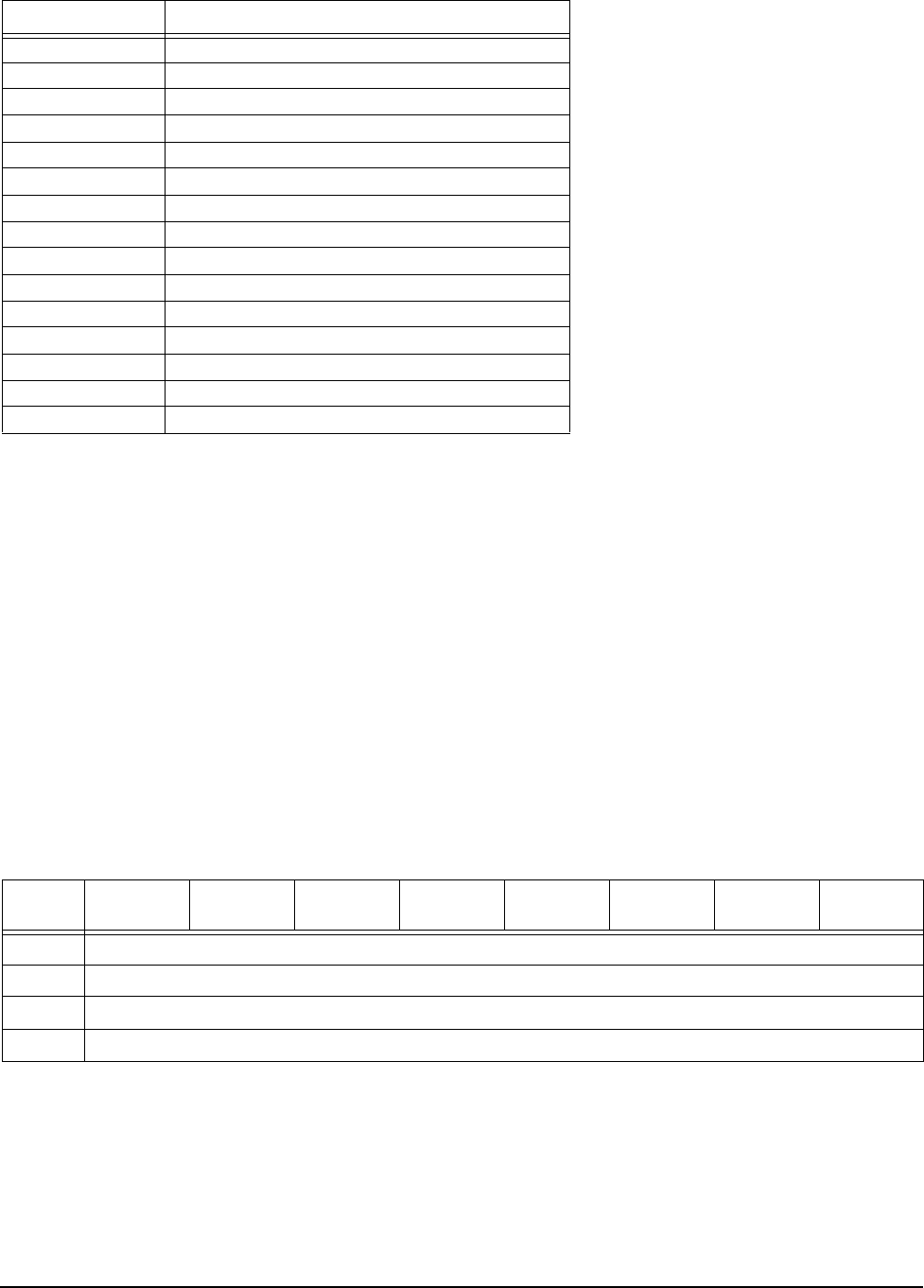
84 Parallel SCSI Interface Product Manual, Rev. A
Table 24: Message format
4.2.1 One-byte messages
One-byte messages consist of a single byte transferred during a MESSAGE phase. The byte’s message code
determines the message to be performed as defined in Tables
27, 40, and 45. The IDENTIFY message is a
one-byte code, but its format is different.
4.2.2 Two-byte messages
Two-byte messages consist of two consecutive bytes transferred during a MESSAGE IN phase or a MES-
SAGE OUT phase. The value of the first byte determines the message to be performed as defined in Tables
27, 40, and 45. The second byte is a parameter byte used as defined in the message descriptions.
4.2.3 Extended messages
A value of 01h in the first byte of a message indicates the beginning of a multiple-byte extended message. The
minimum number of bytes sent for an extended message is three. All of the extended message bytes shall be
transferred in consecutive MESSAGE IN phases or consecutive MESSAGE OUT phases. See sections refer
-
enced in Table 26 for details of the extended messages.
Table 25: Extended message format
1. The EXTENDED MESSAGE LENGTH field specifies the length in bytes of the Extended Message
Code
plus the extended message arguments to follow. The total length of the message is equal to the
EXTENDED MESSAGE LENGTH plus two. A value of zero in the EXTENDED MESSAGE LENGTH
field indicates 256 bytes follow.
2. The extended message codes are listed in Table 26.
Message code Message format
00h One-byte message (TASK COMPLETE)
01h Extended messages
02h–0Ah One-byte messages
0Bh Obsolete one-byte messages
0Ch–0Eh One-byte messages
0Fh–10h Reserved one-byte messages
11h–13h Obsolete one-byte messages
14h–15h Reserved one-byte messages
16h–17h One-byte messages
20h–24h Two-byte messages
25h–2Fh Reserved two-byte messages
30h–54h Reserved
55h One-byte message
56–7Fh Reserved
80h–FFh One-byte message (IDENTIFY)
Bit
Byte
7 6 5 4 3 2 1 0
0 EXTENDED MESSAGE (01h)
1 EXTENDED MESSAGE LENGTH (n–1) [1]
2 EXTENDED MESSAGE CODE [2]
3-n EXTENDED MESSAGE ARGUMENTS [3]
